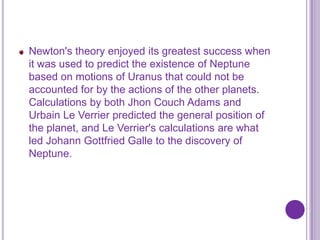This document provides a summary of Isaac Newton's life and scientific work. It discusses that Newton was a mathematician and physicist born in 1642 in England. It describes some of his major scientific contributions including developing the theory of gravity, optics through his work with prisms and light, and mathematics through developing calculus. The document also provides biographical details about Newton such as his education at Cambridge and work there as a professor before moving to London to work at the Royal Mint.
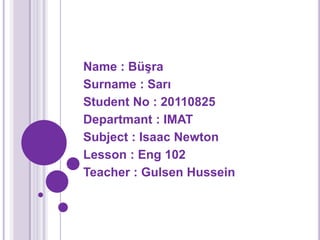


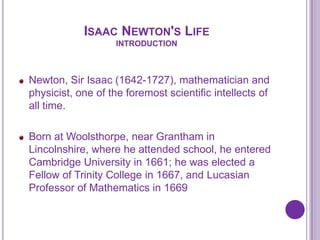





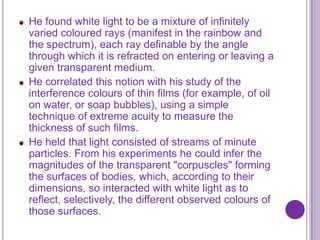

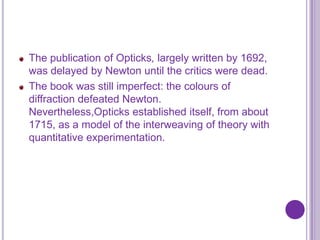





![In 1687, English mathematician Sir Isaac
Newton published Principia, which hypothesizes
the inverse-square law of universal gravitation. In
his own words, “I deduced that the forces which
keep the planets in their orbs must [be] reciprocally
as the squares of their distances from the centers
about which they revolve: and thereby compared
the force requisite to keep the Moon in her Orb with
the force of gravity at the surface of the Earth; and
found them answer pretty nearly.](https://image.slidesharecdn.com/isaacnewtonsunum-120523122116-phpapp01/85/Isaac-Newton-18-320.jpg)
